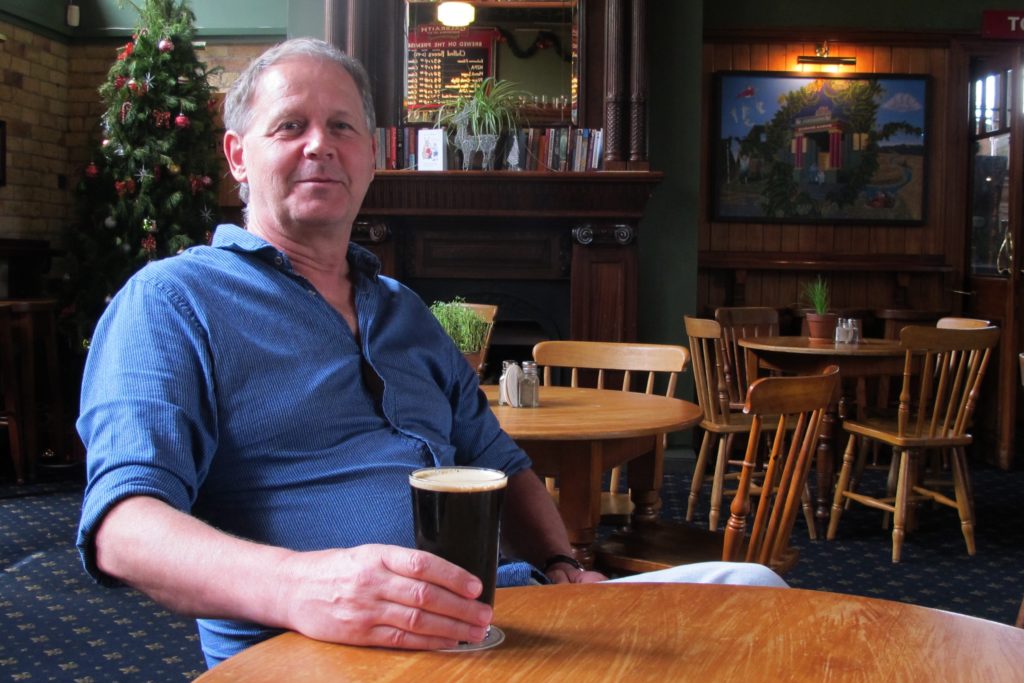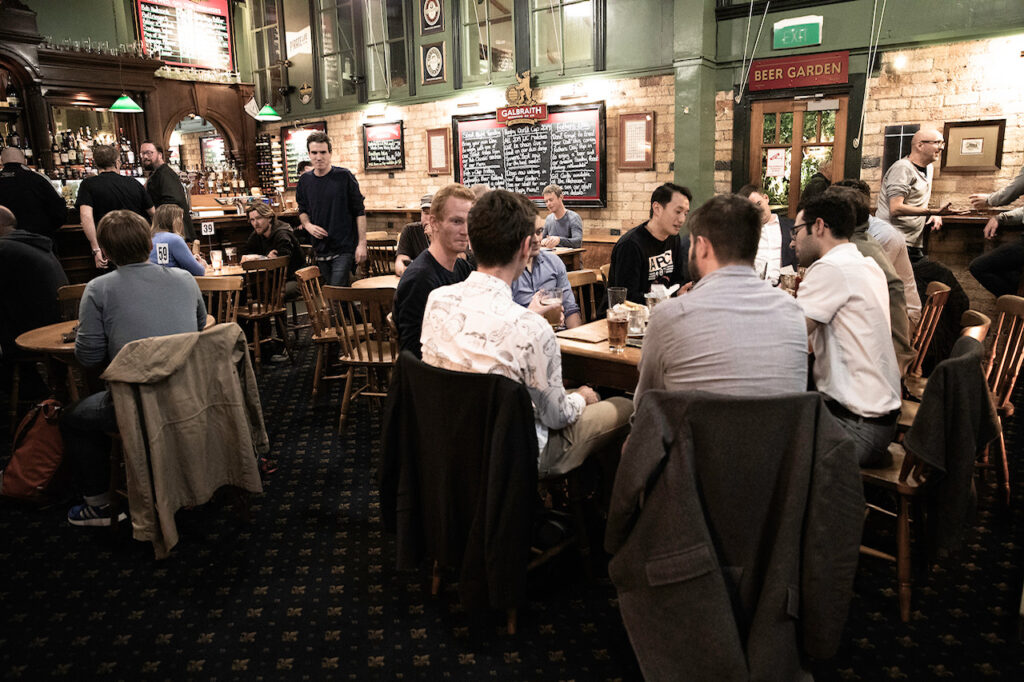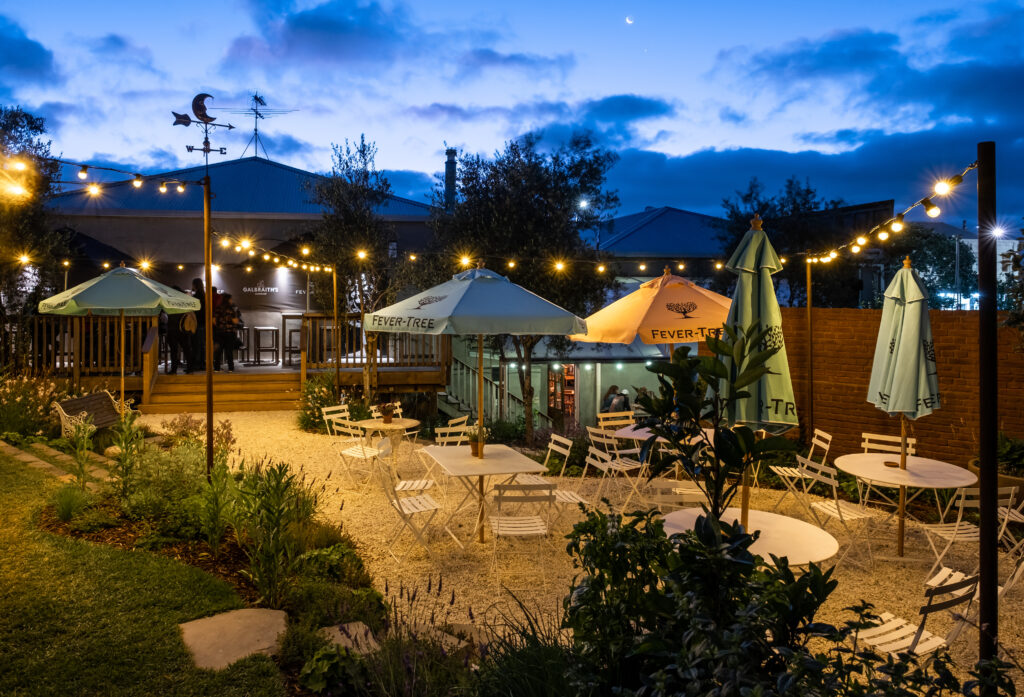“Where’s the time gone? It’s been a bit of a time tunnel this place — I just got absorbed into it.” Keith Galbraith is reminiscing on 30 years as the owner of Auckland’s iconic Galbraith’s Alehouse. “You know, I said to my wife when we started this, ‘look, give us 10 years’ … And here we are at 30.
“I still enjoy it. When you get to a certain stage in life and business, it becomes your identity.
“Some mornings I wake up in a cold sweat thinking, ‘if I decide to give it the heave, who am I going to be?’.
“Then I wake up and have a cup of tea and I’m fine. Because, yeah, what else am I but a publican?”
What else?
For starters he’s a standard-bearer for a style of beer, a way of beer, if you like, that is fast disappearing in a world constantly fizzing for the next new thing.
Galbraith built his eponymous pub on the back of the cask-conditioned real ale he learned to make in Kent. It’s a rare thing in New Zealand, The only other brewpub in the country that does anything similar is The Laboratory in Christchurch (although I’m happy to stand corrected). There are others who pour real ale, such as The Free House in Nelson and The Moutere Inn. But for real ale served in the place it’s made, Galbraith’s has done it for longer, and invariably better, than anyone else.

In its heyday the former Grafton Library at the top of Mount Eden Road had six taps dedicated to cask ale. Thet’s down to four these days — Bob Hudson Golden Ale, Bellringer’s Best Bitter, Man of Kent IPA and Yes Paddy, an Irish cream stout that is a creation of their Ireland-born brewer David “Teddy” O’Leary.
Both Bob and Bellringer’s date back to the start of the pub, when cask ale was a hard sell to punters raised on Lion Red and Speight’s, which Galbraith needed on tap in order to survive.
Along the way beers like Bitter & Twisted ESB and Grafton Porter have fallen out of favour, although Bitter & Twisted is getting a rebrew for the 30th birthday on June 12.
Bob — a landmark beer
The eagle-eyed will note that Bob is back to being Bob Hudson (4% ABV) after a brief period as Hudsons Golden Ale (4.4%).
Bob Hudson was Galbraith’s mentor at Larkins Brewery in Kent.
The brief name change and altered ABV came after Bob passed away and Galbraith met Bob’s extended family at the funeral.
“At the funeral I met his son, who’s my age, for the first time. Even the whole time I was living in England I never met him, Bob kept his life very compartmentalised.
“And I met Bob’s grandchildren, who were quite young then.
“So when we were thinking of concepts; of what we were going to do with the products, because I knew a whole lot of Hudsons now, and Bob was gone, I thought ‘we’ll flip the recipe a little bit, make it a bit more interesting and we’ll just call it Hudsons’.
“But I think it suits a lower gravity, so we decided to revert it back to Bob Hudson’s.”
The tap range at Galbraith’s these days is the four cask ales, a range of lagers, a hazy, a West Coasty IPA and a small number of guest taps that fill the style gaps that Galbraith’s don’t make.

I ask Galbraith if the cask ales are still a hard sell, even though they’ve been on for three decades. Have the customers evolved?
“No, they haven’t. They still have a bit of trouble getting their heads around the fact that it’s not highly carbonated and the fact that it’s not ice cold.”
And the loyal converts, well they’re thinner on the ground than they used to be.
“A lot of people that were coming in regularly now don’t — and for various reasons, such as mortality, or they’ve given up the drink or whatever.
“So, we’re not selling as much of the cask ale as we used to.
“That’s why we’ve got more into New World styles with the hazies and the West Coast IPA.”
I counted three lagers as well. A Czech, a Munich-style and a German Pilsner.
Less cask, more lager
“When I started out, I was anti-lager because I thought lager was an evil concoction from the big breweries.
“But I’ve come to realise that when it’s done well it’s a bloody good drink … when you make it with good malt let the hops come through it works.
“In general, I think more and more people are getting into simpler beers, getting away from all that stuff that the cool new kids got into years ago — the West Coasts and your East Coasts and your hazies. I think people are getting a little bit over that. They’re getting a bit tired.”
In that sense, he believes Man of Kent is so proving popular because it’s such a different IPA experience.
“People ar etasting this for the first time with its tremendous depth of malt weight and that sacky English hop character and they find it’s quite a complex mouthful.”
But of course, not everyone understands that this style of IPA has been around for hundreds of years in one form or another.
“We had one person who asked for a pint of IPA on the handpull.
“One of the staff said to him, ‘do you know about this? It’s an English-style IPA’.
“Yeah, I’ve had handpull beers before.
“And I happened to be around when he took a pull on the beer and he said: ‘What the hell is this shit?’
“I asked him what the problem was. ’This is shit, you call this IPA? I’ve been drinking IPA for five years and this is shit’.”
“I gave him back his money back and he left.”
A stickler for tradition
It’s a story not dissimilar to one Galbraith’s tells about his opening day in 1995 when a disgruntled punter practically spat out his best bitter and said: “If that’s your best, I’d hate to try the worst.”
But despite the naysayers, Galbraith is determined to keep pouring real ales.
“It’s never going die as long as I’m here. Even if there’s only one handpull and it’s got Bellringer’s or Bob Hudson’s on it, it’ll always feature.
“But seriously, it’s been great as it really established us — we were doing something nobody else was doing.
“And if you bought into it and you liked it you had to come here for it. So that’s stood us in good stead.”
While Galbraith is happy to sell guest kegs of “marshmallow caramel Buzz Bar” he’s a stickler for tradition in his own beers, using whole cone hops imported from England fermenting in open top vessels — possibly the only brewery in New Zealand still doing so.
Because of freight issues he’s sometimes been forced to put pellet hops in his beer, and he describes the taste as being “like a bloody Hoover has run across your palate and left a little bit of dust behind”.
Whole cones are “much more noble, more aromatic, more generous”.
The open top fermenters bring out more fruit character in the beer. “There’s something that must go on, I think, between the surface of the beer and the air …”
While the core beers haven’t changed, and the interior décor remains as is, the biggest development at Galbraith’s is the post-Covid addition of a walled garden bar that is a divine place to spend a summer’s evening.

The land is leased from neighbouring Watercare which has a pumping station in the same block.
“Every year for around 18 years I would write to Watercare and say: ‘I want to lease the land off here to put a decent beer garden in here’.”
After year after year of rebuttals, he used the Covid-19 downtime in 2020 to write “an epistle, a 5-page long letter as to why they should after 18 years, finally relent.
“And they said, well, let’s get out of Covid, and let’s talk about property management.
“It’s cost me a bloody arm and a leg but it gives me pleasure. We’d always been a winter pub and that gives us that summer thing as well.
“I think what’s happening now is all the people coming in the summertime aren’t coming in in the wintertime. So we get two different crowds.”
The food has settled back into classic pub food after a stint where Galbraith wanted to take it a bit more high-end.
“But I was deluding myself because people go to the pub to have pub food. At the end of the day, people, no matter what we do, want fish and chips.”
Classics are classics for a reason. And it’s the same with the real ale.
“You can put as much fruit essence into a beer as you like, or real pulp, or whatever. But that’s not the same as something that’s been fermented in the 300-year-old birch barrel.”